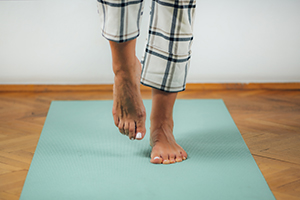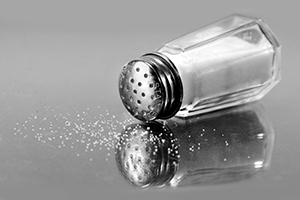June 2022 News Roundup
This month features HF patients wearing cameras, an unusual PCI complication, the impact of a one-legged stance, and more.

Every month, Section Editor L.A. McKeown curates a roundup of recent news tidbits from journals and medical meetings around the globe.
The US Food and Drug Administration says it remains concerned that pulse oximeter readings may be less accurate in individuals with darker skin pigmentations. In an updated safety communication, the FDA said it plans to hold a public meeting of the Medical Devices Advisory Committee later this year to discuss the available evidence.
Long-term survivors of breast cancer who engage in sports or cycling for 7 or more hours per week are less likely than inactive survivors to have abnormal measures of global longitudinal strain, a study in JACC: CardioOncology shows. The researchers say the findings may point to a cardioprotective effect of exercise and should motivate inactive breast cancer survivors to increase their physical activity.
 Testing middle-age and older individuals for the ability to stand on one leg independently for 10 seconds may help predict life expectancy, new findings suggest. Compared with those who could not complete a one-legged stance, those who could had less risk of all-cause mortality over the following 7 years, according to data from the CLINIMEX exercise study published in the British Journal of Sports Medicine. The study began in 1994 to assess the relationship of physical fitness and conventional CV risk factors, with all-cause and cause-specific mortality.
Testing middle-age and older individuals for the ability to stand on one leg independently for 10 seconds may help predict life expectancy, new findings suggest. Compared with those who could not complete a one-legged stance, those who could had less risk of all-cause mortality over the following 7 years, according to data from the CLINIMEX exercise study published in the British Journal of Sports Medicine. The study began in 1994 to assess the relationship of physical fitness and conventional CV risk factors, with all-cause and cause-specific mortality.
While only about 25% of eligible patients participate in cardiac rehab, new data suggest that participation is much lower among Asian, Black, and Hispanic patients compared with those who are white. “Initiatives such as automatic referral, virtual delivery options, establishment of [cardiac rehab] facilities in underserved or rural areas, community‐based [cardiac rehab], or evening delivery options all have potential to increase participation,” the researchers write in the Journal of the American Heart Association.
A low-sodium diet cooked with a controlled amount of salt, rather than with a small amount of salt added before eating, may help hospitalized cardiac patients stick to the diets after discharge by showing them how to perceive adequate salt intake by taste, investigators in Brazil say.  Lack of salt and seasonings, they add in the International Journal of Cardiovascular Science, are the main reasons for poor acceptance of low-sodium diets among patients, demonstrating that these factors still need to be addressed and other strategies aimed at improving compliance should be tested.
Lack of salt and seasonings, they add in the International Journal of Cardiovascular Science, are the main reasons for poor acceptance of low-sodium diets among patients, demonstrating that these factors still need to be addressed and other strategies aimed at improving compliance should be tested.
Investigators wanting to better understand the day-to-day lives of people with CV disease say adding wearable cameras may be one answer. In a small study, they asked heart failure patients to wear tiny cameras, which took automated photos every 30 seconds, around their necks during waking hours for 30 days. The images helped inform clinical questions and personalized health recommendations. While 93% of participants were comfortable sharing the photos, the researchers say efficiently sorting through them for photos that are useful is a challenge, as is ensuring the security of the patient data. The study was published in the European Journal of Cardiovascular Nursing.
Writing in Nature Reviews Cardiology, researchers say RCTs are needed to compare TAVI and SAVR in patients with bicuspid aortic valve (BAV) who are 65 or older and at low or intermediate surgical risk. The article reviews existing clinical experience and observational data on the application of TAVI in patients with BAV and compares that with what is known about BAV and surgery.
 In patients with acute NSTEMI, Black race and Hispanic ethnicity reduce the likelihood of undergoing coronary angiography and PCI, a study published in the Journal of the American Heart Association finds. Lower household income (< US $40,000 per year) also was associated with decreased odds of coronary revascularization.
In patients with acute NSTEMI, Black race and Hispanic ethnicity reduce the likelihood of undergoing coronary angiography and PCI, a study published in the Journal of the American Heart Association finds. Lower household income (< US $40,000 per year) also was associated with decreased odds of coronary revascularization.
A team from Belgium report an unusual PCI complication in an elderly patient with NSTEMI who they say was agitated and experiencing delirium, possibly from a urinary tract infection. Following the procedure, the patient was found to have sustained a perforated right vertebral artery during PCI, which was successfully treated with endovascular management, they write in JACC: Case Reports.
L.A. McKeown is a Senior Medical Journalist for TCTMD, the Section Editor of CV Team Forum, and Senior Medical…
Read Full Bio


Comments